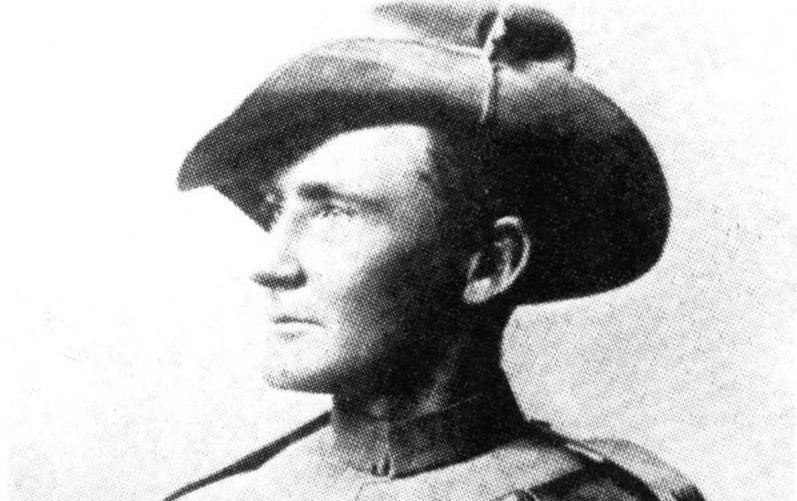Monument of shame
January 10, 2023
Anzac Parade in Canberra is Australia’s major ceremonial avenue, a grand boulevard commemorating (heroic) service and sacrifice. Yet at least one of its monuments represents war crimes, racism, torture and murder.
Few nations are as strident about their military history as Australia. There is no more admired symbol in our national psyche than that of the digger – the archetypal courageous, laconic, irreverent Aussie, who for 122 years has excelled on battlefields around the world.
Anzac Parade perpetuates this symbolism. But by depicting what we did, rather than why we did it, it wilfully distorts our understanding of our past.
After decades of ignorance and denial, Australians are finally being forced to confront the truth about white settlement of our terra nullius (not); namely, that it was based on systematic warfare, land seizure, massacres, murder, child theft, and slavery. The journey of acceptance isn’t easy and there’s a long way to go, but we’re getting there. Australia will be a better place once the truth has become an intrinsic part of our national story.
For precisely the same reason, we need to confront the truth about our military history.
Harvard don Caroline Elkins has provided us with a compelling start-point with one of 2022’s most important books, Legacy of Violence.
A Pulitzer Prize winner in 2006 for her study of imperial Britain’s brutal, racist gulag in Kenya in the 1950s, Elkins has now expanded her work by investigating the systematic use of violence as a method of control throughout the British empire in the 20th century in Afghanistan, Aden, Bengal, Burma, the Caribbean, Ceylon, Cyprus, Egypt, India, Iraq, Ireland, Kenya, Malaya, Nigeria, Palestine, South Africa, Sudan and the West Indies.
Australia is excluded from Elkins’ model on the technicality that we were a “white settler colony” rather than “white imperial rulers”. We do not, however, escape her unyielding truth-telling, which details the “violent damage” we inflicted on “local populations”.
There is a second chapter to this dark history. The delusion that we were partners in Empire roused our eager participation in the mother country’s legacy of violence.
Between 1899 and 1902 (a period that encompassed Federation), some 16,000 Australians rushed off to southern Africa to join Britain’s war against Dutch-Afrikaner settlers known as “Boers”, who had been progressively occupying parts of the region for around 250 years.
Excited by the simple-minded slogan that they would be serving “king and country”, those young men were, in fact, serving British commercial interests.
Competition between Britain and the Boers over southern Africa’s resources had been simmering for more than a century. A tipping point was reached in 1884 following the discovery of vast gold reserves. Squabbling over territory was one thing, gold fever was something else altogether; and the most rapacious empire in history wasn’t about to miss out.
The Boer War established a template for the British Empire’s subsequent methodical use of concentration camps, torture, slavery and murder throughout the 20th century. The policy was orchestrated by Britain’s national hero, Lord Kitchener, and supported by towering figures in British history such as Churchill, Curzon, Rhodes and Kipling.
The concentration camps especially targeted Afrikaner women and children, more than 100,000 of whom were incarcerated in disgusting conditions. Around 30,000 died from malnutrition, starvation, and outbreaks of endemic diseases.
As Elkins notes, this was “the first time a single ethnic group had been targeted en masse for detention or deportation”. You can join the dots.
The willing involvement of our soldiers made Australia complicit in these war crimes.
But you wouldn’t know that from a visit to the Boer War Memorial on Anzac Parade. On the contrary, you’d probably come away thinking that both the cause and our contribution were worthy, even noble.
The memorial provides Anzac Parade’s most evocative image: four mounted soldiers cascading down a slope, perhaps returning from a patrol, silhouetted against gum trees, casually graceful, weary, but still keen-eyed. The figures wonderfully capture the essence of the mythological digger.
The most famous of our Boer War diggers is, of course, Harry “Breaker” Morant, once a national hero, “unjustly” executed by the British, now recognised as a murderer and war criminal.
In recent times, American officials have started removing scores of monuments to Rebel leaders from the Civil War, most notably those of Robert E. Lee. Commander of the Confederate Army, General Lee has been revered for 157 years by Western armies and military academies, including Australia’s Royal Military College, Duntroon.
But contemporary debate has focused on Lee’s character rather than his generalship, and has exposed him as a traitor, slave-owner and racist (he also lost the Civil War). Even West Point, “that hallowed military academy,” which Lee attended and once commanded, is removing his portrait, stone bust, and famed (within armies) quote about “honour”.
Memorials play a critical role in educating and socialising us, and in shaping our self-image. The wilfully dishonest Boer War memorial on Anzac Parade does us a profound disservice by distorting our understanding of Australia’s past.
In truth, it is a monument of shame.

